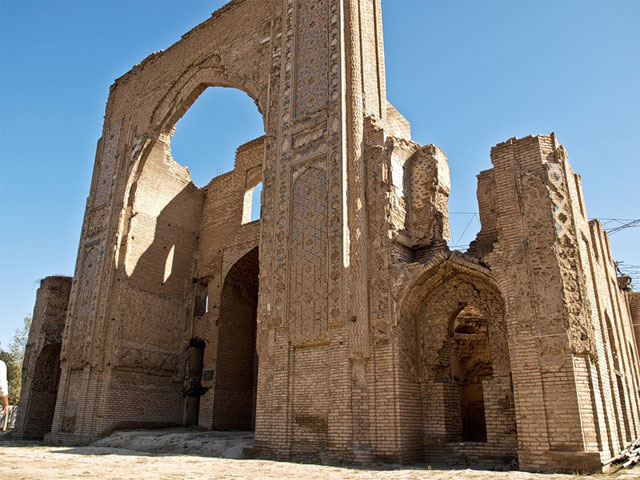The architectural monument with the name “Ishrat-khana” (“House of Joy”) dates back to the time of the Timurid Abu-Said (1451-1469).
In 1940 Professor Masson M.E. carried out archeological excavations of the monument. A wide octahedral crypt was found below the main hall. The crypt contains many female and children tombs, which suggests that this construction built in 1464 was a necropolis for the royal women and children of the Timurid house.
The Ishrat-khana mausoleum is of great artistic importance. This monument used to be an ensemble of buildings. The tomb in the centre of the mausoleum was dominated by the projecting portal in the west. An arched domed gallery jpined the building from the south and thus created an additional entrance into (he tomb. A mosque was located on the northern side. Service rooms were placed on two floors around the hall.
The facet of the Ishrat-Khana’s facades was unique: hexagonal stars and geometric designs are rendered in terracotta brick. Strips of glazed tiles, coloured brick inlays and mosaic panels create an impression that the entire silvery texture is vibrating in the air.
Today the structure has been deteriorated. The central dome and drum finally collapsed after successive earthquakes in 1903.























